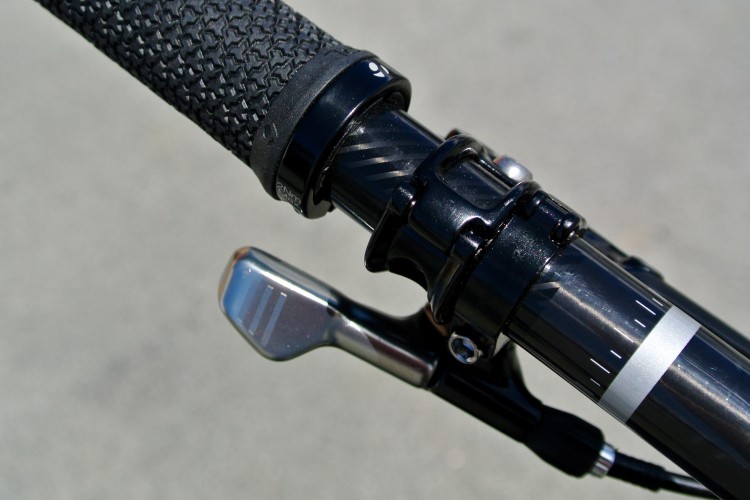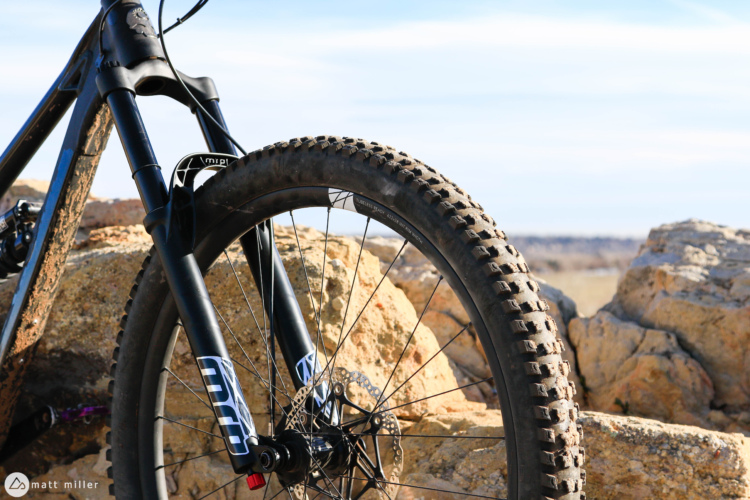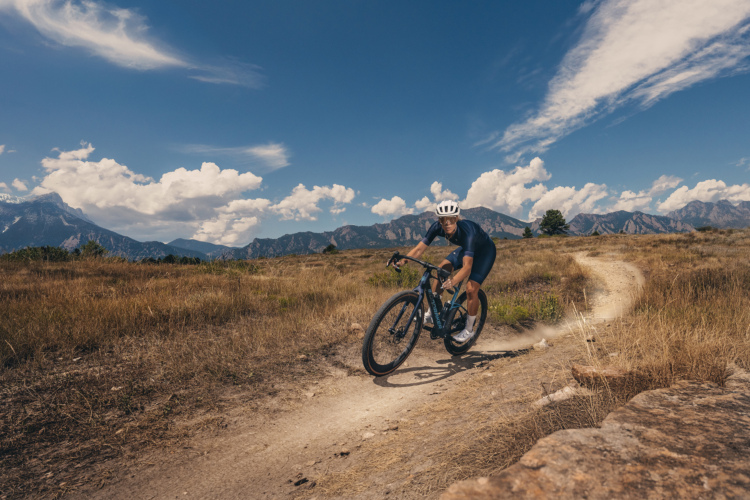
The Singletracks staff enjoys reviewing products that are a bit outside the mainstream. We also like products that provide a lot of bang for the buck. In our past experience, SR Suntour’s forks fulfill both those criteria. Greg reviewed their flagship Auron trail fork back in 2014, and I reviewed its little brother, the Aion, in 2015. On review here is the latest version of the Auron, which sees a plethora of changes from the previous model.
Specs

We talk about it all the time but it bears repeating: today’s mountain bikes are insanely capable. As riders, we’re going harder than ever and demanding more of our equipment. That means components need to adapt to keep pace, and forks are no different. The old Auron used 34mm stanchions, but the new fork sees its legs grow to 35mm. In an era where some XC bikes come spec’d with 34mm forks, I welcome the change.

Other updates include a Boost-spaced (110×15) axle, a matte black finish, and an integrated fender. The most important difference, however, is the use of SR Suntour’s new RC2 PCS cartridge. Essentially an internal floating piston, the PCS (Piston Compensator System) prevents oil and air from mixing inside the damping cartridge. Oil mixing with air creates bubbles which lead to cavitation, causing inconsistent performance. The PCS keeps that from happening.
User-friendly adjustments on the Auron include air pressure, rebound, low speed compression, and high speed compression. Modifying the air volume on the Auron is simple, but not something you would do trailside. Underneath the air top cap, the rider can add or remove small rubber pucks to increase or decrease the air volume in the fork, which in turn changes the progressiveness of the fork.

The 29/27.5+ version of the fork that I tested sports travel from 130mm (tested) to 160mm, weighs in at 2,000g (4.5lbs), and retails for $700.
On the Trail

My Kona Honzo hardtail served as the test platform for the Auron. Kona specs a 120mm fork on their complete builds, but I wanted 130mm for a little extra pedal clearance and, of course, the extra rad factor. The 130mm fork does require more concentration on really steep climbs, but not enough to make me consider swapping back to 120.
Right off the bat, the brawny Auron was supple and smooth. There wasn’t much — if any — break-in period required for the fork to feel good. My first ride on the Auron featured a healthy 5,000 feet of descending — more than enough to get a solid feel for the increased stiffness of the larger 35mm legs. Maybe part of it is the relatively short travel configuration, but I can’t imagine needing a stiffer fork for this application. In fact, the Auron made for such a stout front end, I had to swap my 35mm handlebar and stem back to a 31.8 setup to reduce hand and arm fatigue.

As good as the first few rides were, I found myself wanting a little more progression in the spring curve. At a lower air pressure, I had the small bump compliance I was after, but I blew through the travel too easily. Increasing the air pressure gave me more usable stroke but sacrificed suppleness. The solution was to add a couple extra pucks to the bottom of the air side top cap for a total of four. In the end, I could run about 5 PSI less than before but still get the ramp up I was after. There’s always some give and take with suspension tuning — especially at the shorter end of the travel spectrum — but I found my happy place with the new Auron.
Both high and low speed compression are adjustable on the Auron. There are 5 settings for the high speed compression while the low speed compression gets 17 clicks of adjustment. I spent a majority of the test with the low speed compression wide open and the high speed set to position 3. These settings worked great for me, but I also tend to ride further over the back wheel, so I like my fork to be as active and supple as possible. The Auron offers 25 clicks of rebound adjustment, and I ran mine 5 clicks from wide open. Some might lament the lack of an on-the-fly compression platform lever à la Fox or RockShox, but I prefer to leave my suspension open at all times — forks in particular. Either way, the Auron provides adjustable HSC in its place.
Finish Line

With subtle tweaks from its predecessor, the new Auron from SR Suntour is a better fork than ever before. In fact, I’d have a hard time discerning a difference in plushness between it and a similar fork from RockShox or Fox in a blind test. With enough adjustments to keep knob-turners happy and nice touches like the integrated fender, the Auron is one hell of a fork for the money.
Thanks to SR Suntour for providing the Auron for review.










0 Comments